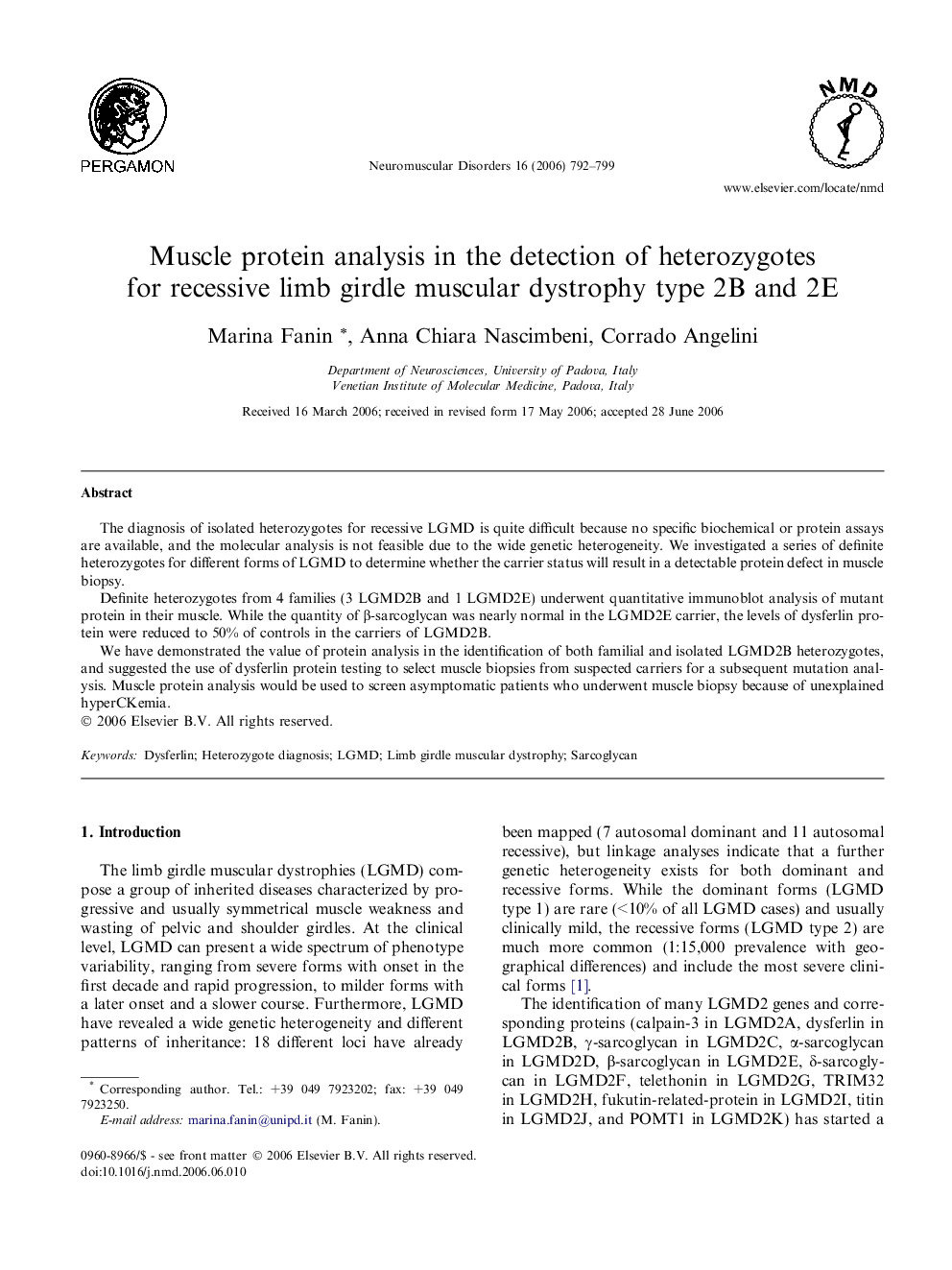| Article ID | Journal | Published Year | Pages | File Type |
|---|---|---|---|---|
| 3081406 | Neuromuscular Disorders | 2006 | 8 Pages |
The diagnosis of isolated heterozygotes for recessive LGMD is quite difficult because no specific biochemical or protein assays are available, and the molecular analysis is not feasible due to the wide genetic heterogeneity. We investigated a series of definite heterozygotes for different forms of LGMD to determine whether the carrier status will result in a detectable protein defect in muscle biopsy.Definite heterozygotes from 4 families (3 LGMD2B and 1 LGMD2E) underwent quantitative immunoblot analysis of mutant protein in their muscle. While the quantity of β-sarcoglycan was nearly normal in the LGMD2E carrier, the levels of dysferlin protein were reduced to 50% of controls in the carriers of LGMD2B.We have demonstrated the value of protein analysis in the identification of both familial and isolated LGMD2B heterozygotes, and suggested the use of dysferlin protein testing to select muscle biopsies from suspected carriers for a subsequent mutation analysis. Muscle protein analysis would be used to screen asymptomatic patients who underwent muscle biopsy because of unexplained hyperCKemia.
